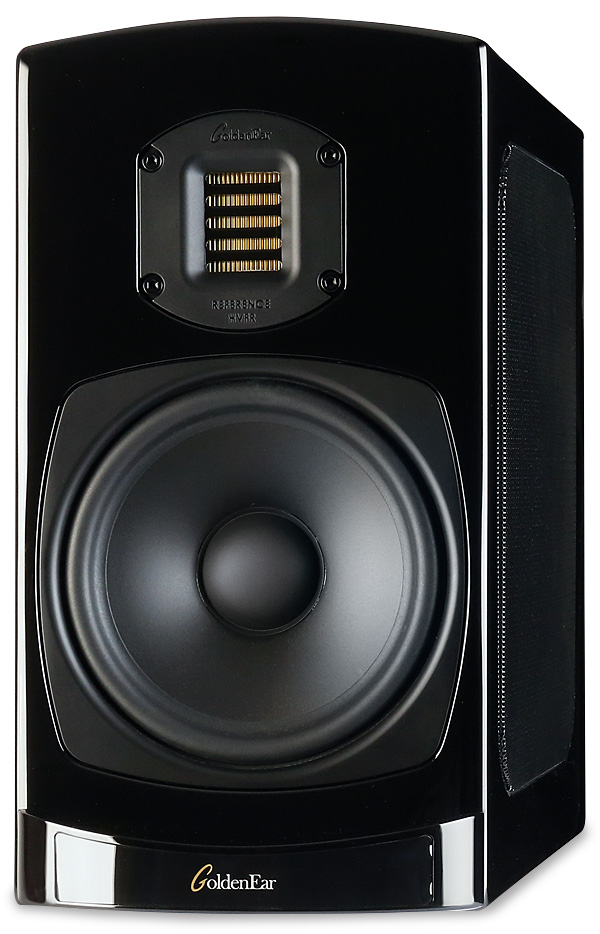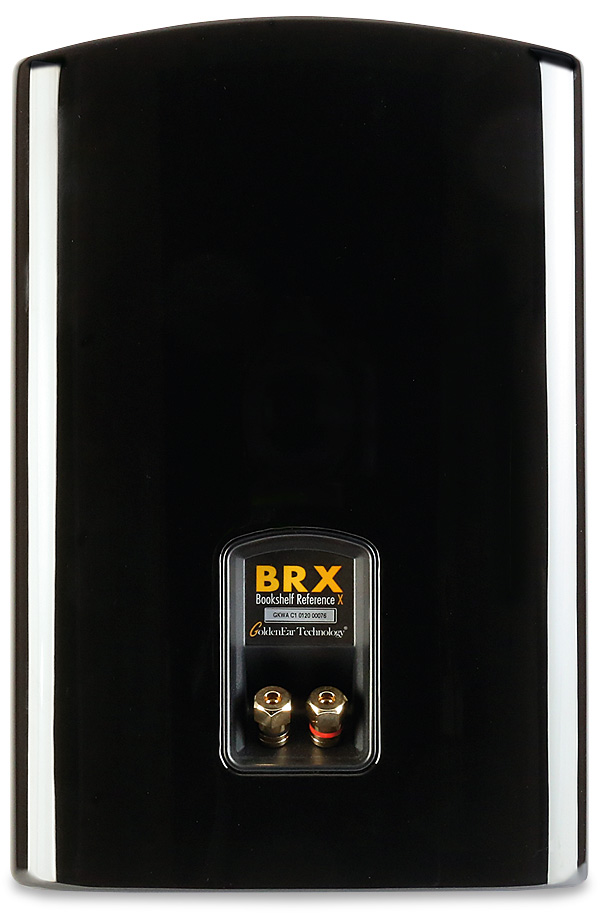原文出處 hi-fi news
Now owned by AudioQuest cable’s parent company, GoldenEar has added the compact Bookshelf Reference X to its range – the final design from longstanding CEO Sandy Gross
Looking at the BRX (Bookshelf Reference X) loudspeaker, it’s easy to feel slightly unnerved by the amount of, well, ‘technology’ that’s been squeezed into its compact dimensions. But then we should remember it hails from American brand GoldenEar, a company that – under the auspices of founder Sandy Gross – has always seemed to approach loudspeaker (and subwoofer) design a little differently to many rivals.
Gross, who also established Polk in 1972 and Definitive Technology in 1990 before setting up GoldenEar in 2010, has now departed, leaving shortly after its 2020 buyout by The Quest Group, parent company of cable specialist AudioQuest. Yet the development of the BRX, unleashed in the UK thanks to GoldenEar’s new distribution, predates Gross’s departure, and bears the usual hallmarks.
Plastic Fantastic
Not for GoldenEar a real wood or veneer cabinet in a naturalistic finish, instead this 308x205x311mm (hwd) speaker features a moulded plastic enclosure that’s wider at the rear than the front and finished in ‘hand-rubbed’ piano black lacquer. This makes it lighter than you might expect, and it all looks very swish, although perhaps not entirely in tune with the modern trend for discreet styling. The supplied (metal) grilles, which snap magnetically into place, aren’t quite as smart, but they’re more likely than fabric designs to keep the BRX’s drivers safe. The general build quality of the speaker also appears excellent.

Bass is augmented by two side-mounted ‘inertially balanced 165mm planar infrasonic radiators’ (ABRs) located behind perforated grilles
Priced £1499, the BRX tops GoldenEar’s Bookshelf Series above the older, trapezoid-shaped Aon 2 (£900) and Aon 3 (£1100) models. Indeed, the speaker clearly enjoys more ‘trickledown’ from the company’s floorstanding Triton Series, which begins with the £1600 Triton 7 and £3995 Triton 2, and extends through a quartet of active/passive hybrids, ending with the £11,000 Triton Reference [HFN Jun ’19].
As with most GoldenEar designs, the BRX benefits from the use of Auxiliary Bass Radiators as well as the company’s HVFR (High-Velocity Folded Ribbon) tweeter technology. On this model, the drivers are directly borrowed from the Triton range. The distinctive gold-coloured HVFR, which claims a high-frequency reach to 35Hz, is described as being the same as found on the Triton Reference, and below it on the BRX’s front face is a 150mm bass/mid driver, also a ‘Reference’ design, working to a 3.3kHz crossover. This unit is actually smaller than that fitted to the Aon 3, and replaces the earlier driver’s ‘Multi-Vaned Phase Plug’ with a more conventional dustcap. Cone geometry, we’re told, has been computer modelled and ‘formed with a proprietary curve’, while its ‘special formulation of polypropylene’ improves stiffness and damping.
Big On Bass
On each side of the BRX’s cabinet are large grilles that cover the pair of side-facing 165mm ABRs. With these in place to tune the speaker’s bass response there’s consequently no sign of a reflex port on the BRX’s rear – all you’ll find is an inset cove housing its single set of binding posts.
The fact this allows a flush-fit cable installation is a minor detail but this also suggests the BRX speakers can be placed near a rear wall if desired, though boundary loading from not just one but three bass units needs to be taken into consideration. GoldenEar’s own recommendation for ‘balanced bass’ and ‘optimal midrange clarity’ is a minimum 20cm distance from the rear wall, and as much as possible from either side. Toe-in is also recommended, and tweeter positioning to be at ear height – not that GoldenEar sells any specific loudspeaker stands to match.
A catch-all amp power recommendation is 20W-250W, the minimum figure notable for being double that of the Aon 2 and Aon 3 bookshelf speakers, despite all three sharing the same nominal 4ohm impedance and 89/90dB sensitivity ratings. So is this premium compact model a hard ‘drive’? PM‘s Lab Report would suggest so, although I found the speakers well catered for by an Arcam Class G amp and more than adequately handled by a moderately punchy Marantz NR1710 receiver.
![]() A Thrilling Ride
A Thrilling Ride
GoldenEar says its ethos is to create ‘a voice with as little overt character as possible’, which to me sounds like a pledge for neutrality over heightened detail or warm bass. This is an honourable intention but doesn’t mean the BRX is without its own sense of character. Listening to this speaker was a thrilling experience, the way it blended deep, expansive bass with an expressive, well-resolved mid and treble being quite remarkable at the price.
It also had a real sense of get-up-and-go, particularly when positioned around that 20cm minimum recommendation. The funky bass track on Sophie Ellis-Bexter’s live version of ‘Groovejet (If This Ain’t Love)’ [Read My Lips, 2002 reissue; Polydor 589 987-2] sprung eagerly from the BRX pair, plump and purposeful, and gave the sound a feeling of genuine weight and scale. Perhaps my room dimensions and placement choice hadn’t quite arrived at GoldenEar’s ‘balanced bass’, but I was startled by how much sheer punch these compact speakers could deliver, without the trio of bass drivers blowing it out of proportion.
Going well with the BRX’s bass charms was a nice feeling of snap and attack. The Ellis-Bextor track closes with a brief, energetic flurry of timbale drums, and they sounded wonderful here, with a leading edge and bounce that let me easily picture the percussionist on stage, happy to momentarily be the star of the show. Similarly, the stabbing synths and reverbed snare hits in Judas Priest’s ‘Turbo Lover’, from the album of the same name [30th Anniversary Edition; Sony Music 88875183272], had a dynamic flair that breathed space into the swirling mix.
Club Bass
Naturally, the low-end extension is limited by the BRX’s cabinet and driver size, but with that room reinforcement helping out, it made a solid stab at conveying the underlying sub-bass energy in Dillinja’s drum ‘n’ bass track ‘Hard Noize’ [44.1kHz/ 16-bit download]. There was certainly enough welly here to give this instrumental the necessary sense of menace.
Small speakers that can fill a room will always have admirers, so I expect the BRX fan club to be oversubscribed. With the level up, AC/DC’s ‘Girls Got Rhythm’ [Highway To Hell; Epic EPC 510764 2] sounded huge because of the heft of the drums, buoyant bassline, and the way Bon Scott’s lascivious vocals cut through the rhythm track. This full-bodied feel comes even while the speakers don’t create much beyond-the-edge soundstage width, particularly with GoldenEar’s recommended toe-in.

Two 4mm cable binding posts connect to what GoldenEar describes as a ‘floating’ crossover configuration
Stereo imaging is taut, however, with the BRX bringing a focus to dense mixes and presenting a clear centre. The BBC Big Band’s rendition of Elmer Bernstein’s ‘The Great Escape Theme’ [The Age Of The Silver Screen, Vol 1; 44.1kHz/16-bit download] features ‘small’ woodwind instruments atop lower brass and strings, and the ensemble was well defined in the space between the enclosures – particularly the cheeky, trebly main melody – as was the depth of the stage itself. Meanwhile, composer Maurice Jarre’s theme from Lawrence Of Arabia, which opens the set, should probably be in the dictionary as the definition of ‘sweeping’, and it swelled and slid from the BRX system with panache.
GoldenEar’s bass/mid driver and pleated tweeter combined to dig out subtle detail and high-frequency ‘air’ from this piece’s mass of violins, and did a great job with Norah Jones’ dominating vocal on the jazz/pop smash ‘Don’t Know Why’ [Come Away With Me; Parlophone; 192kHz/24-bit]. The percussive information here – cross-stick ‘tocks’ and delicately struck hi-hats – really benefitted from the extended treble.
Cool Under Pressure
Crucially, even at high levels, I found it hard to tip the BRX into sounding flustered. That said, GoldenEar’s aim of a ‘neutral tonality’ perhaps veers a little bit towards the dark side – the BRX’s focused delivery and excellent bass presence contrasting with the light, sweet approach of many other small loudspeakers. This, I suppose, makes it a better fit for rhythm-driven tracks than more delicate pieces, but my session with the Norah Jones album was highly enjoyable nonetheless.
Anyway, if you’re expecting this review to highlight some sort of deal-breaking issue with the performance of GoldenEar’s BRX, you’re out of luck. The energy and bass weight on offer – for speakers at this price – is simply fantastic, and it’s allied to a textured midrange and clean treble.
Talent Show
Dennis Wilson’s astonishing Pacific Ocean Blue set [Caribou Records 88985368632], which hops between genres and lays on a smorgasbord of instruments, needs a talented loudspeaker to do it justice. Right on cue, GoldenEar’s BRX threw itself into the slide guitar rock of the title track, while finding a more sedate groove with the honey-toned ballad ‘You And I’. And with that ABR pair on hand to reinforce the active bass driver, this speaker brought to mind a famous song from Dennis’s Beach Boys years. Yep, I’m picking up good vibrations…
Hi-Fi News Verdict
Its styling might not suit all listening rooms, but the final GoldenEar loudspeaker design from Sandy Gross is a triumph. Low-end power and poise, courtesy of its ABRs, is a standout trait, and the BRX doesn’t overdo it at the expense of instrumental and vocal presence, nor fall short when the volume is set high. When compact speakers can be this good, you might wonder why slender floorstanders even exist!